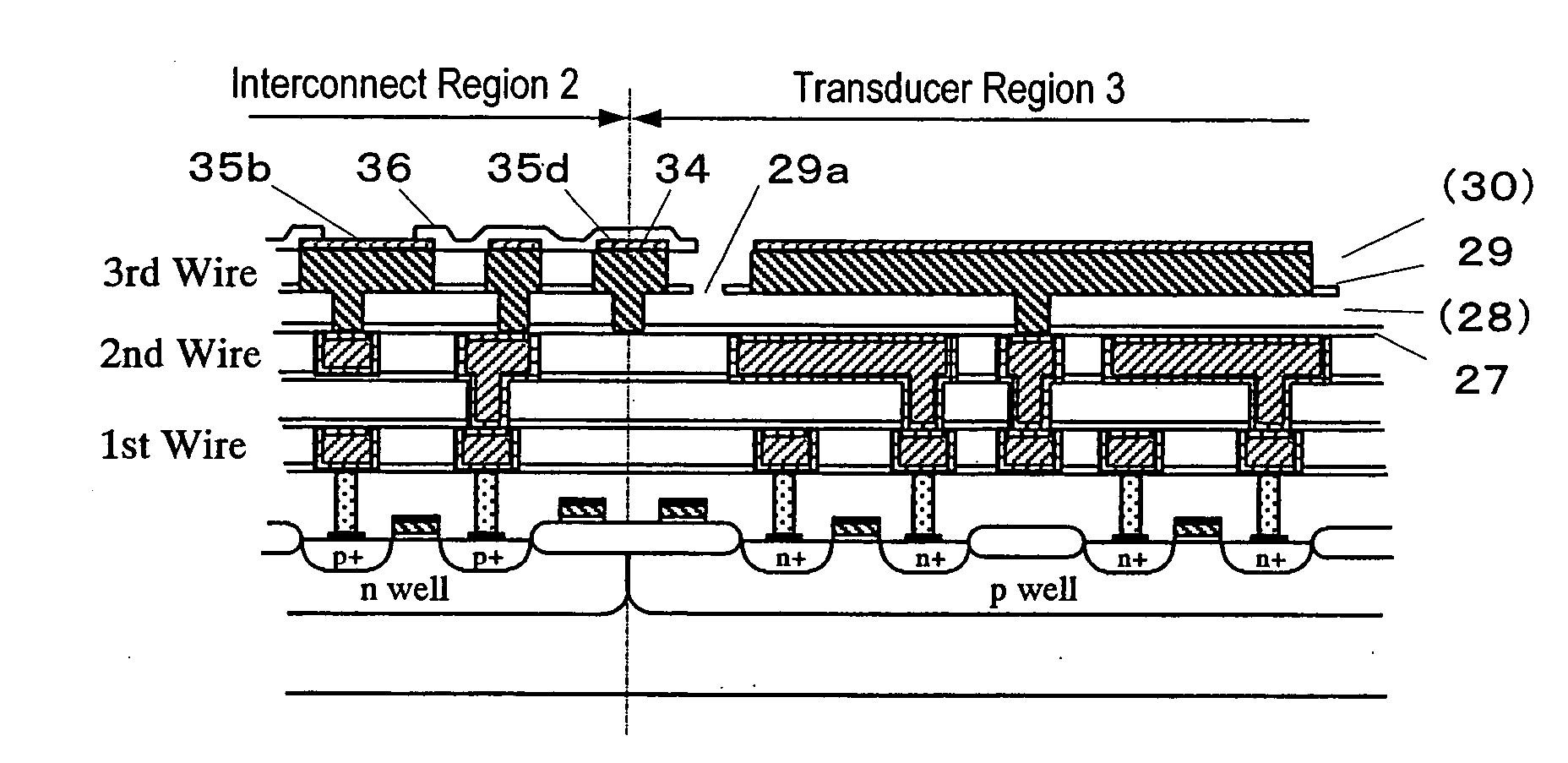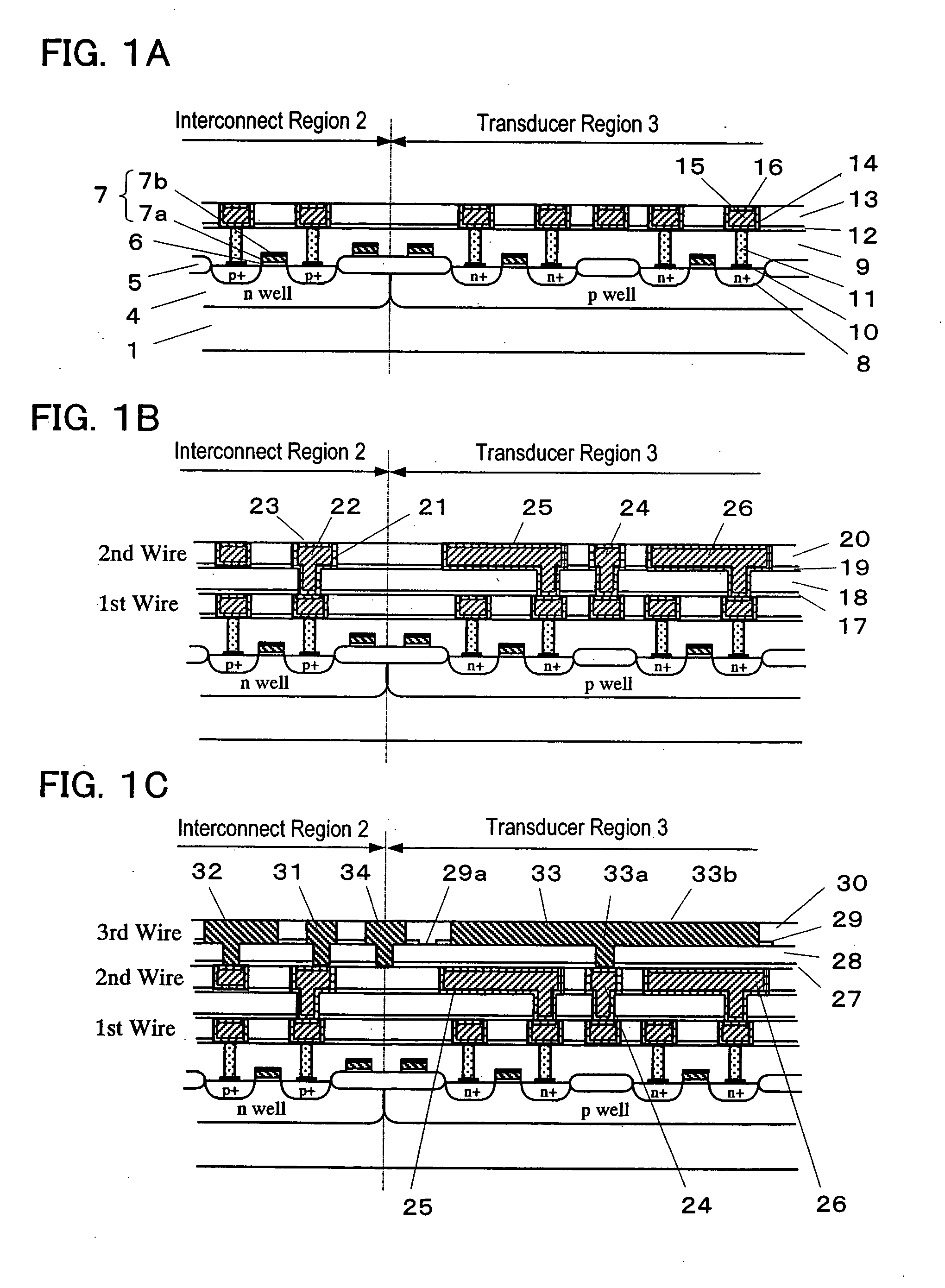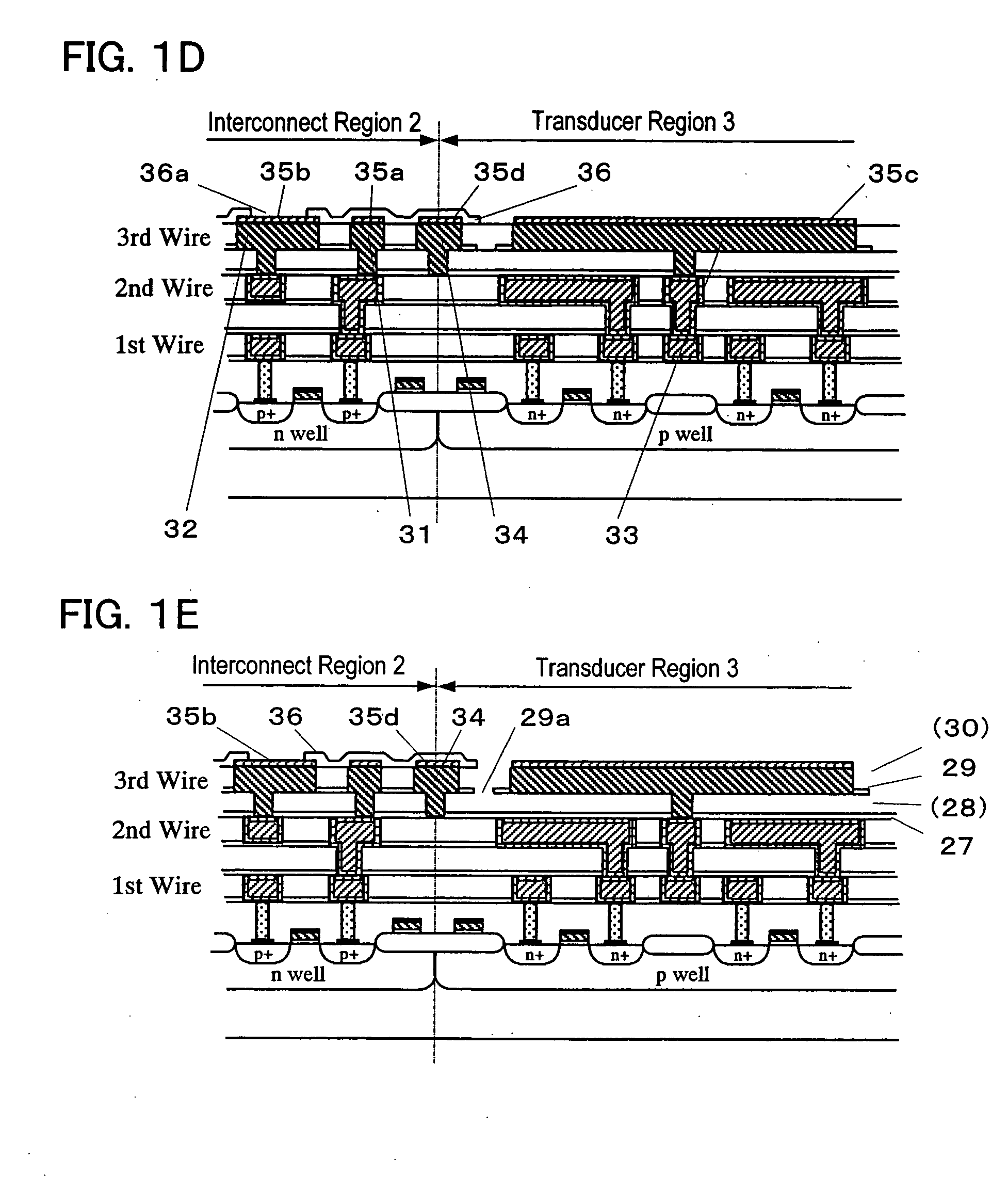Microelectromechanical system and method for fabricating the same
a micro-electromechanical and manufacturing method technology, applied in the direction of instruments, radiation controlled devices, and the details of the semiconductor/solid-state device, can solve the problems of controller damage, controller deterioration, controller damage, etc., and achieve good transducer performance and reduce wiring resistance
- Summary
- Abstract
- Description
- Claims
- Application Information
AI Technical Summary
Benefits of technology
Problems solved by technology
Method used
Image
Examples
Embodiment Construction
[0057] Hereinafter, preferred embodiments of the present invention will be described with reference to the accompanying drawings.
[0058] First, referring to FIGS. 1A, 1B and 1C, illustrated are partially enlarged cross-sectional views of the substrate during the first half of a manufacturing process according to this preferred embodiment.
[0059] Specifically, FIG. 1A shows a cross section of the substrate on which the process step of forming the first conductor layer has just been carried out. The substrate for use in this preferred embodiment is an n-type silicon wafer 1, on which an interconnect region 2 and a transducer region 3 will be defined.
[0060] In the interconnect region 2, a CMOS circuit or a BiCMOS circuit has preferably been provided so as to generate a drive signal for driving a transducer in response to an external input signal. In the transducer region 3 on the other hand, a plurality of transducers and a plurality of switching elements for selecting transducers to ...
PUM
| Property | Measurement | Unit |
|---|---|---|
| thickness | aaaaa | aaaaa |
| temperature | aaaaa | aaaaa |
| temperature | aaaaa | aaaaa |
Abstract
Description
Claims
Application Information
 Login to View More
Login to View More - R&D
- Intellectual Property
- Life Sciences
- Materials
- Tech Scout
- Unparalleled Data Quality
- Higher Quality Content
- 60% Fewer Hallucinations
Browse by: Latest US Patents, China's latest patents, Technical Efficacy Thesaurus, Application Domain, Technology Topic, Popular Technical Reports.
© 2025 PatSnap. All rights reserved.Legal|Privacy policy|Modern Slavery Act Transparency Statement|Sitemap|About US| Contact US: help@patsnap.com



